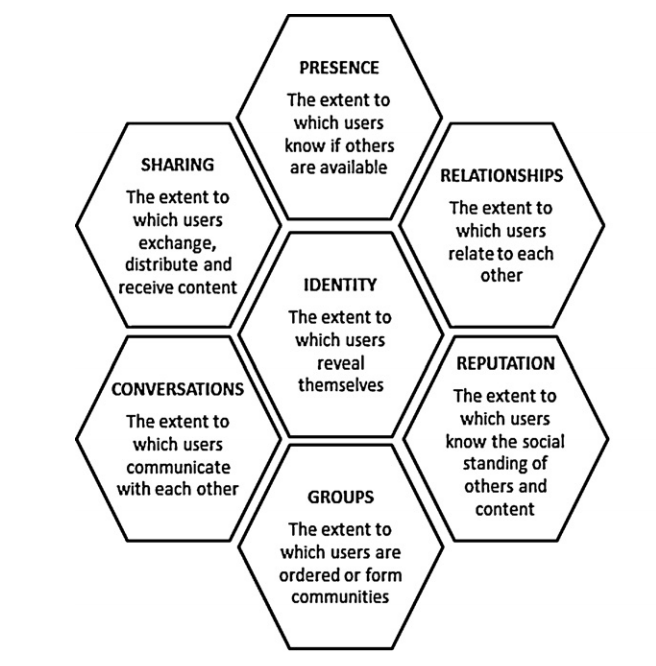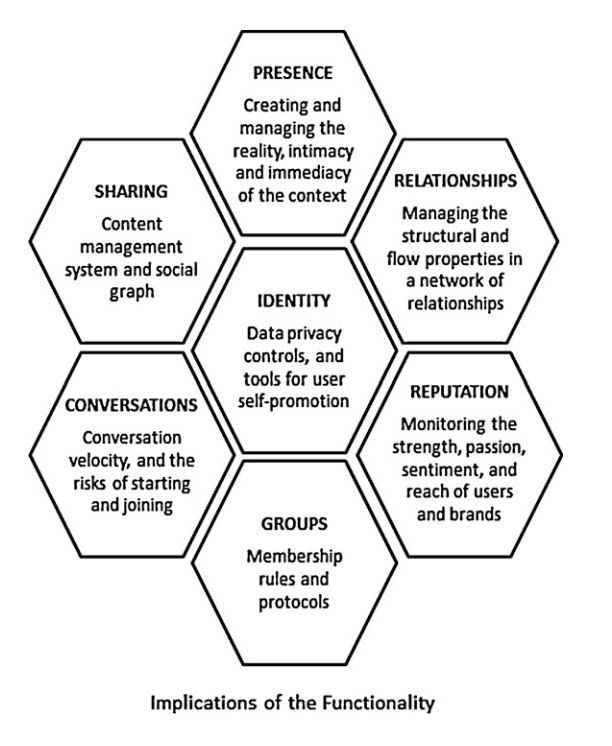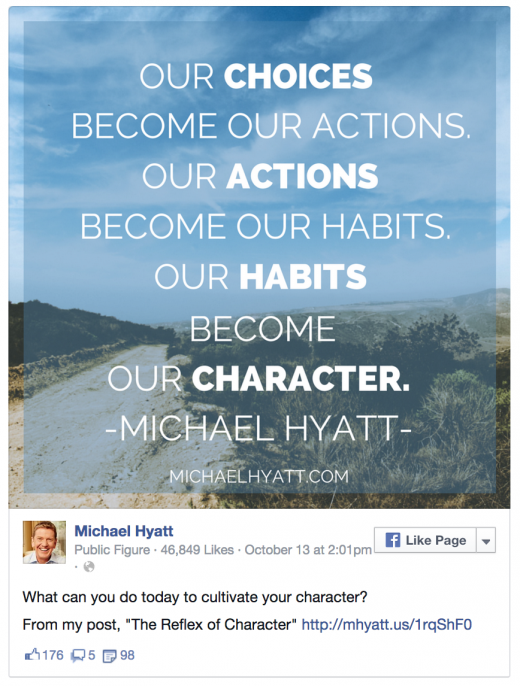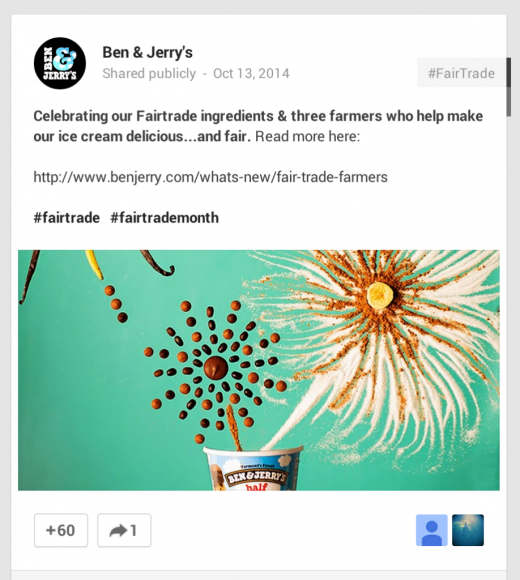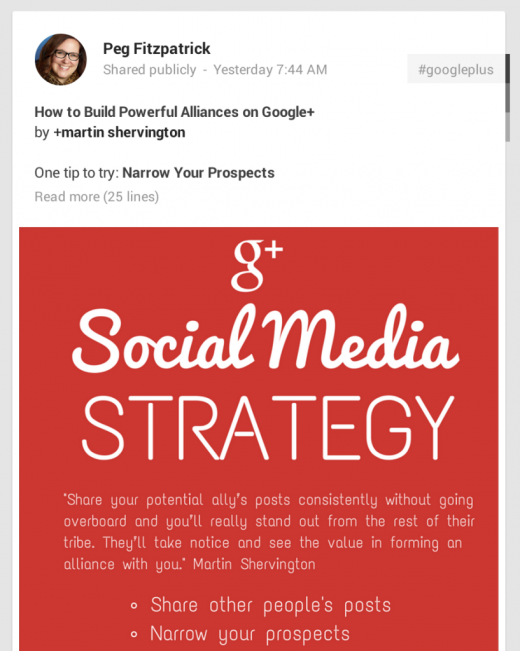
This post originally appeared on the Buffer blog.
You’ve been sharing to social media for some time now, and you’re synthesizing all the great advice out there about what to post, when to post, and how to measure.
Awesome work. You’ve got the content part down pat. Now here’s the next layer: The emotion behind the social media update.
What feeling does your update impart? How does someone feel when they read your update?
These are big, ethereal questions, and significantly different than discovering great content and finding the best literary device to share with.
The tone of your tweet, update, and post matters. And studies have shown that positivity in social media wins in online interactions.
Why positivity beats negativity online
Positivity holds a special place for us here at Buffer. It is one of the 10 values that guides our culture, and we practice it in every way possible—our interactions with each other, our social media posts, our customer communication, etc.
It goes hand in hand with this quote from one of our favorite books (Dale Carnegie’s How to Win Friends and Influence People):
I shall pass this way but once; any good, therefore, that I can do or any kindness that I can show to any human being, let me do it now. Let me not defer nor neglect it, for I shall not pass this way again.
It’s amazing validation to find that positivity is not only a great way to encourage one another and run a fun company but also that positivity can have an impact on social media marketing.
Here are some studies that back up the productivity emphasis.
Positive updates breed positive updates
One of the outcomes of Facebook’s experimentation with its news feed was some interesting data on the effect of positive, negative, and general emotion on sharing.
For one week in January 2013, Facebook analyzed three million posts from users’ news feeds. Linguistic software was used to determine whether an update was positive or negative (or neither), and Facebook tweaked the news feeds to see the effect of showing higher ratios of positive or negative updates.
(This also happened to be one of Facebook’s experiments that got many users thinking about taking a Facebook vacation. Manipulating news feeds did not go over too well for many.)
Here is Wired’s recap of the study:
Facebook has found that seeing positive posts influences people to post positive updates, seeing negative posts influences people to post negative updates, and that an absence of emotion on their News Feed leads them to post less overall.
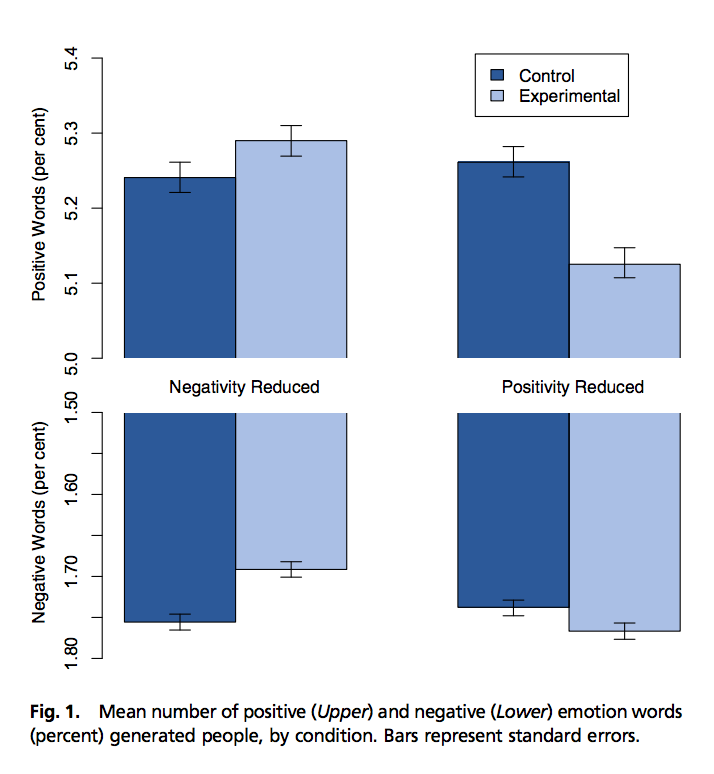
It’s the last point that has some interesting applications for marketers. The researchers noted that the effect of less posting was slightly stronger when users were fed fewer positive updates, suggesting that Facebook users become less engaged when content on their feed becomes more negative.
The study supports research by BMJ from back in 2008 that pointed to positivity and “emotional contagion” that causes happiness to spread virally through social media. One of the criticisms of that study was the difficulty in analyzing social media over such a long-term space.
With Facebook’s research, the results came after only one week, due in large part to the massive reach and volume of posts that come through Facebook on a daily basis.
How to get more followers: Be positive
Hubspot’s Dan Zarella is well-known for his in-depth data projects on social media. Reviewing his learnings from Twitter, Dan published five scientifically-proven ways to get more followers. Number five is especially relevant here.
Those with higher follower counts on Twitter have a proportionally lower percentage of negativity in their tweets than those with lower follower counts.
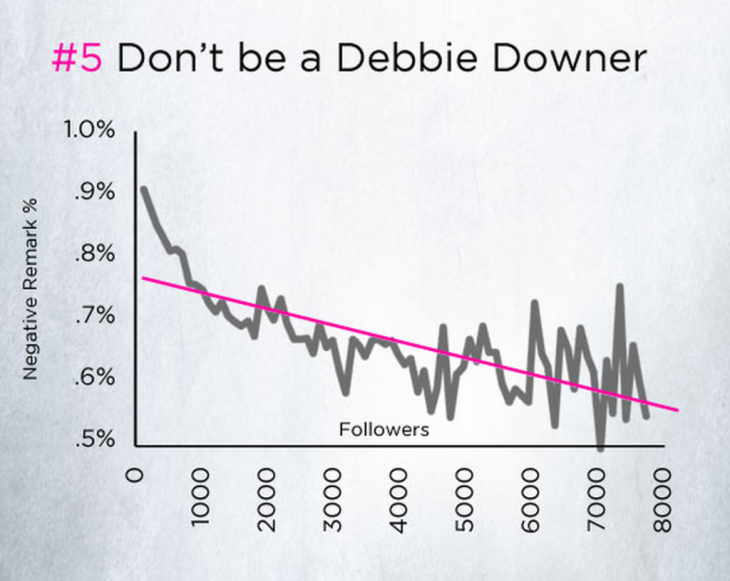
Dan’s research found in particular that negative remarks including sadness, aggression, negative emotions/feelings, and morbid comments were correlated with accounts with fewer followers.
For accounts with 8,000 followers, negativity appears in less than half of one percent of their remarks.
That leaves a lot of room for positivity!
(Of note, Dan’s research also showed that having conversations on Twitter did not correlate to more followers. Being positive is great. Being chatty? Yet to be determined.)
If you can’t say anything nice, say nothing at all
Stanford’s Justin Chen and his colleagues put to the test the system of upvoting and downvoting and how it affects the quality of a community.
The results: Downvoting leads to lower-quality content and more downvotes from those who were downvoted.
The research study included the comments sections at CNN.com, IGN.com (video games), Breitbart.com (politics), and Allkpop.com (Korean entertainment). After identifying comments that could be classified as quality, they compared data points to see the effect of votes on comments and future contributions of the community.
Those who received downvotes were likely to contribute lower-quality comments over time and also to provide more downvotes to their peers.
Here’s what an example voting network looks like from the study, where arepresents the given post and B through G represent how a community votes on the post and on each other.
One of the takeaways from the study:
That points to an obvious strategy for improving the quality of comments on any social network site. Clearly, providing negative feedback to “bad” users does not appear to be a good way of preventing undesired behavior.
An alternative might be to ignore the negative comments entirely. The study showed that comments that received no interaction often led to lower engagement from the original poster. Those who get ignored tend to dwindle in contributions and comments.
Reputation’s place in the building blocks of social media
In 2011, researchers Jan Kietzmann, Ian McCarthy, and colleagues arrived at a framework to define the most essential parts of social media, synthesizing what they’d learned in studying dozens of other research projects on the subject.
Their conclusion: Social media is made up of seven building blocks.
- Identity
- Sharing
- Conversations
- Groups
- Reputation
- Relationships
- Presence
In their report, the team describes these building blocks as “the honeycomb of social media.”
It’s the reputation element in particular that plays a key role in the positivity aspect of social media.
The researchers discussed how best to arrive at one’s reputation on social media, identifying key metrics like follower count and engagement with posts. Beyond these numbers, they also pointed to sentiment being a key component to this piece of the honeycomb.
Positive sentiment in your social media updates and in the responses to your brand leads to a positive reputation.
Next: So, what does this all look like in practice?
What positive social media updates look like in practice: 5 tips and examples
Now comes the nitty-gritty: Taking these learnings and spinning them into social media updates.
In looking over some of the positive updates in my social feeds, I noticed a few similarities among the content that stood out as the most upbeat. Here are five tips that I found.
- Exclamation points!
- Positive language and words
- Referencing community members (using “via” or “HT” or direct address)
- Engage the community with questions
- Bright, cheerful images or pics of happy, smiling people
I pulled several great examples from brands, companies, and individuals who are doing positivity well on social media. Here are several that stood out to me. (Feel free to add your favorites in the comments. I’d love to see them!)
On Twitter
Be The Change: 30+ Interactive Marketing Resources http://t.co/PDfRYElZCl by @moniquethegeek on @thunderactive | Fab list!
— Mari Smith (@MariSmith) October 15, 2014
Awesome post from @insynchq on how they started delivering better support: http://t.co/3VSW0ESgIz – You’ll love the “24-Hour Apology Folder”
— Groove (@Groove) September 26, 2014
On Facebook
On Google+
On LinkedIn
Takeaways
Positivity in social media is a key component to a great experience—both for everyday sharing and for social media marketing.
How can you take this information and put it into practice?
Share with positivity in your social media updates. Avoid negative emotions like aggression, morbidity, and cynicism. Leave the negative commenters alone.
Smile.
Keep things positive on social media, and see your social media marketing bloom. I’m excited to hear how it goes for you!
Please do share here with any thoughts or ideas on how this might look for you or how it’s worked for you in the past.
Read next: How positive thinking builds skills, boosts health and improves your work
Get the TNW newsletter
Get the most important tech news in your inbox each week.

